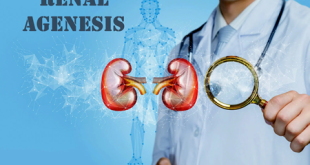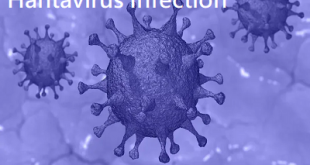Overview – Rotavirus Infection
Rotavirus Infection is caused by Rotavirus, a contagious virus that causes diarrhea. It’s the most common cause of diarrhea in infants and children worldwide, resulting in over 215,000 deaths annually. Before the development of a vaccine, most children in the United States had been infected with the virus at least once by age 5.
Although rotavirus infections are unpleasant, you can usually treat this infection at home with extra fluids to prevent dehydration. Occasionally, severe dehydration requires intravenous fluids in the hospital. Dehydration is a serious complication of rotavirus and a major cause of childhood deaths in developing countries.
Good hygiene, such as washing your hands regularly, is important. But vaccination is the best way to prevent rotavirus infection.
Rotavirus transmission
Rotavirus is transmitted between hand and mouth contact. If you touch a person or object carrying the virus and then touch your mouth, you could develop the infection. This is most common from not washing your hands after using the toilet or changing diapers.
Infants and children under 3 are at the highest risk for rotavirus infection. Being in daycare also raises their risk. You might consider taking extra precautions during winter and spring months, as more infections occur this time of year.
The virus can also remain on surfaces for a few weeks after an infected person touches them. This is why it’s crucial to disinfect all common surfaces in your home frequently, especially if a member of your household has rotavirus.
Pathophysiology of Rotavirus Infection
Rotavirus, like other viruses that cause enteritis, primarily infects the cells of the small intestinal villi, especially those cells near the tips of the villi. Because these particular cells have a role in the digestion of carbohydrates and in the intestinal absorption of fluid and electrolytes, rotavirus infections lead to malabsorption by the impaired hydrolysis of carbohydrates and excessive fluid loss from the intestine. A secretory component of diarrhea with increased motility can further exacerbate the illness. This increased motility appears to be secondary to virus-induced functional changes at the villus epithelium.
The pathologic changes to the intestinal lining may not correlate well with the clinical manifestations of the illness. In normal hosts, infections rarely occur in another organ system, although extraintestinal infections have been seen in immunocompromised hosts.
The virus is shed in high titers in the stool starting before the onset of symptoms and persists for up to 10 days after symptom appearance.
What causes rotavirus in a child?
Rotavirus is most often spread through a fecal-oral route. This is often because a child does not wash his or her hands properly or often enough. It can also be caused by eating or drinking contaminated food or water.
The virus may live on surfaces such as doorknobs, toys, and other hard objects for a long time. For this reason, outbreaks can occur in households and child-care centers. To prevent the spread of the virus, children who aren’t sick should not be in contact with a sick child.
Risk factors of Rotavirus Infection
More common risk factors
Children are most at high risk of getting rotavirus disease. Risk factors associated with rotavirus infection include:
- Those in child care centers or other settings with many young children are most at risk for infection.
- Unvaccinated children, aged 3 to 35 months old, can be severely infected by rotavirus.
Less common risk factors
- Older adults have, to some extent, the risk of getting infected.
- Adults who are caring for infected children by rotavirus.
- Immunocompromised patients like HIV patients.
What are rotavirus infection symptoms and signs?
Symptoms of the disease include fever, vomiting, and watery diarrhea. Abdominal pain may also occur, and infected children may have profuse watery diarrhea up to several times per day. Symptoms generally persist for three to nine days. Immunity from repeated infection is incomplete after a rotavirus infection, but repeated infections tend to be less severe than the original infection.
Rotavirus infection can be associated with severe dehydration in infants and children. Severe dehydration can lead to death in rare cases, so it is important to recognize and treat this complication of rotavirus infection. In addition to the symptoms of rotavirus infection discussed above, parents should be aware of the symptoms of dehydration that can occur with rotavirus infection or with other serious conditions.
Symptoms of dehydration include
- Lethargy
- Dry, cool skin
- Absence of tears when crying
- Dry or sticky mouth
- Sunken eyes or sunken fontanel (the soft spot on the head of infants), and
- Extreme thirst
Complications of Rotavirus Infection
Rotavirus infection in infants and young children can lead to severe diarrhea, dehydration, electrolyte imbalance, and metabolic acidosis.
Children who are immunocompromised because of congenital immunodeficiency or because of bone marrow or solid organ transplantation may experience severe or prolonged rotavirus gastroenteritis and may have evidence of abnormalities in multiple organ systems, particularly the kidney and liver.
Diagnosis and Test of Rotavirus Infection
A stool test can detect rotavirus.
In a laboratory, enzyme immunoassay can detect the virus.
Licensed test kits are available that are sensitive, specific and detect all serotypes of rotavirus.
Symptoms normally disappear without treatment.
A doctor should be consulted if:
- Symptoms do not improve after a week
- The individual has recently traveled abroad
- There is blood or mucus in the stool
The person should also visit a doctor if they already have a weakened immune system, due to a health condition, such as acute leukemia, or as a side effect of medical treatment, such as chemotherapy.
How is rotavirus infection treated in a child?
Treatment will depend on your child’s symptoms, age, and general health. It will also depend on how severe the condition is. Antibiotics are not used to treat this illness. Medicines for diarrhea are also not recommended. Some healthcare providers may recommend probiotics. But their effectiveness is unclear.
The goal of treatment is to help reduce symptoms. Treatment may include:
- Giving your child plenty of water, formula, breastmilk, or fluids with electrolytes (sugars and salts). Don’t give young children soda, juice, or sports drinks.
- Feeding your child solid foods if he or she can eat. Don’t restrict food if your child is able to eat. Not having food may cause diarrhea to last longer.
If your child loses too much water, he or she may need to be in the hospital. Treatment there may include:
- Intravenous (IV) fluids. A thin, flexible tube is put into your child’s vein. Fluids are given through this tube.
- Blood tests. These are done to measure the levels of sugar, salt, and other chemicals (electrolytes) in your child’s blood.
- Nasogastric (NG) tube feedings – a small tube may be placed into your child’s stomach through their nose
Rotavirus vaccines
The rotavirus vaccine was first introduced in the market in 2006. Before this time, it was commonplace for young children to have at least one bout of rotavirus infection.
You can help prevent rotavirus and its complications by making sure your child gets vaccinated. The vaccine comes in two forms:
- Rotarix for infants 6 to 24 weeks old
- RotaTeq for infants 6 to 32 weeks old
Both of these vaccines are oral, which means they are administered by mouth, not with an injection.
There is no vaccine available for older children and adults. This is why health professionals recommend getting the rotavirus vaccine for your child at a young age while you can.
Although the rotavirus vaccine can help, no vaccine is 100 percent effective in preventing future infections. You can talk to your pediatrician about the risks versus benefits of this type of vaccine, and whether it’s the best preventive measure for your child. Babies with severe combined immunodeficiency or intussusception, or who are already severely ill shouldn’t get the vaccine.
Rare side effects of the vaccine include:
- Diarrhea
- Fever
- Fussiness
- Irritability
- Intussusception (very rare)
Lifestyle and home remedies
If your baby is sick, offer small amounts of liquid. If you’re breast-feeding, let your baby nurse.
If your baby drinks formula, offer a small amount of an oral rehydration fluid or regular formula. Don’t dilute your baby’s formula.
If your older child isn’t feeling well, encourage him or her to rest. Offer bland foods that don’t contain added sugar, such as whole-grain bread or crackers, lean meat, yogurt, fruits, and vegetables.
Plenty of liquids are important, too, including an oral rehydration fluid. Avoid soda, apple juice, dairy products other than yogurt, and sugary foods, which can make diarrhea worse.
Avoid anything that may irritate your stomach, including highly seasoned foods, caffeine, alcohol, and nicotine.
Prevention of Rotavirus Infection
Exclude people with rotavirus from childcare, preschool, school, and work until there has been no vomiting or diarrhea for at least 24 hours. If working as a food handler in a food business, the exclusion period should be until there has been no diarrhea or vomiting for 48 hours.
Infants, children, and adults with rotavirus infection should not swim until there has been no diarrhea for 24 hours.
The rotavirus vaccine provides good protection against the most common types of rotavirus. A rotavirus vaccine is recommended for all infants. The first dose of the rotavirus vaccine, in combination with other vaccines, is now recommended to be given at 6 weeks of age. It is important for immunization providers and parents to remember that there are upper age limits for the doses of vaccine. For more information see the rotavirus vaccine page.
Follow good hand washing and keeping areas clean procedures including objects (including toys) that may be shared.
Babies and small children without diarrhea who are not toilet trained should wear tight-fitting waterproof pants or swimming nappies in swimming pools and changed regularly in the change room. When fecal accidents occur, swimming pools should be properly disinfected.
 Diseases Treatments Dictionary This is complete solution to read all diseases treatments Which covers Prevention, Causes, Symptoms, Medical Terms, Drugs, Prescription, Natural Remedies with cures and Treatments. Most of the common diseases were listed in names, split with categories.
Diseases Treatments Dictionary This is complete solution to read all diseases treatments Which covers Prevention, Causes, Symptoms, Medical Terms, Drugs, Prescription, Natural Remedies with cures and Treatments. Most of the common diseases were listed in names, split with categories.








sir our front side of kidney very high pain please advise for this problem
It may be due to muscle cramp in the pelvis region or any irregularities in the kidney function may cause a severe pain.
Kindly contact a nephrologist for appropriate diagnosis and treatment.